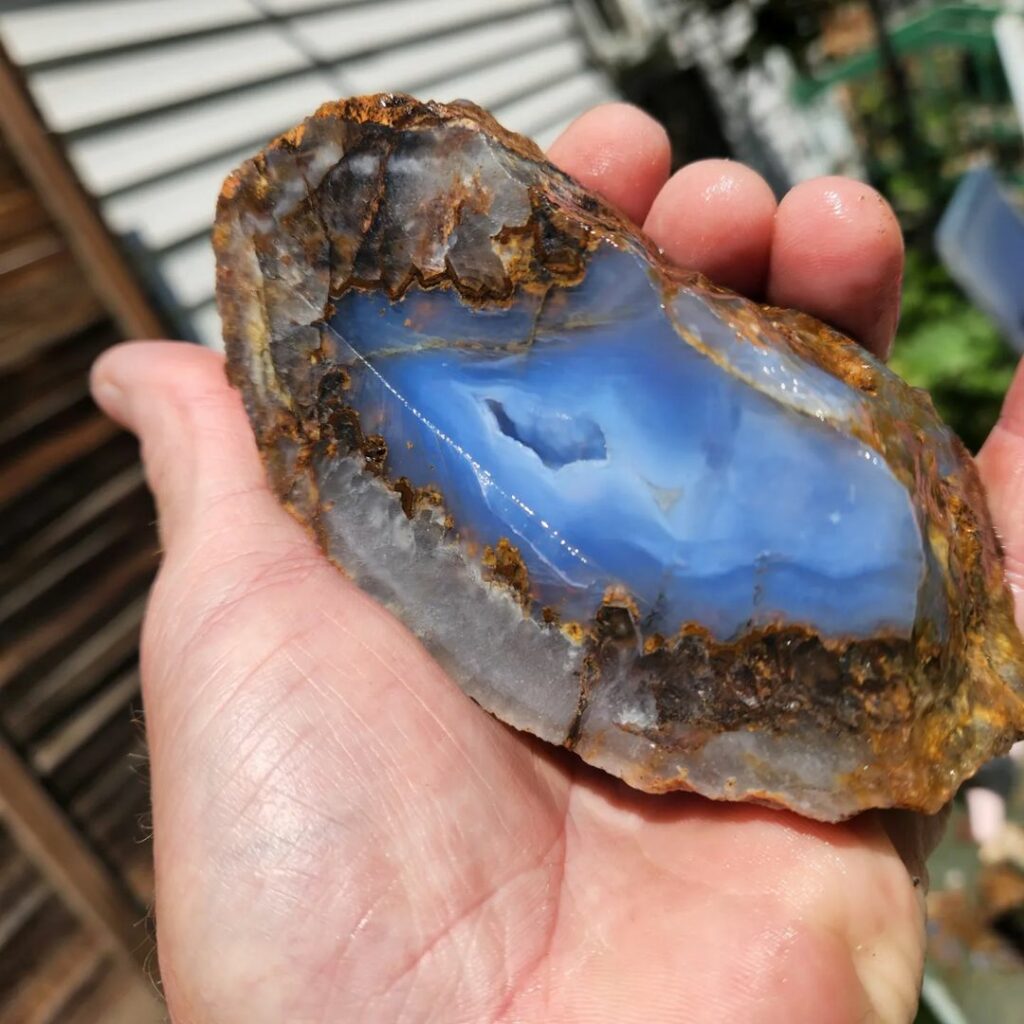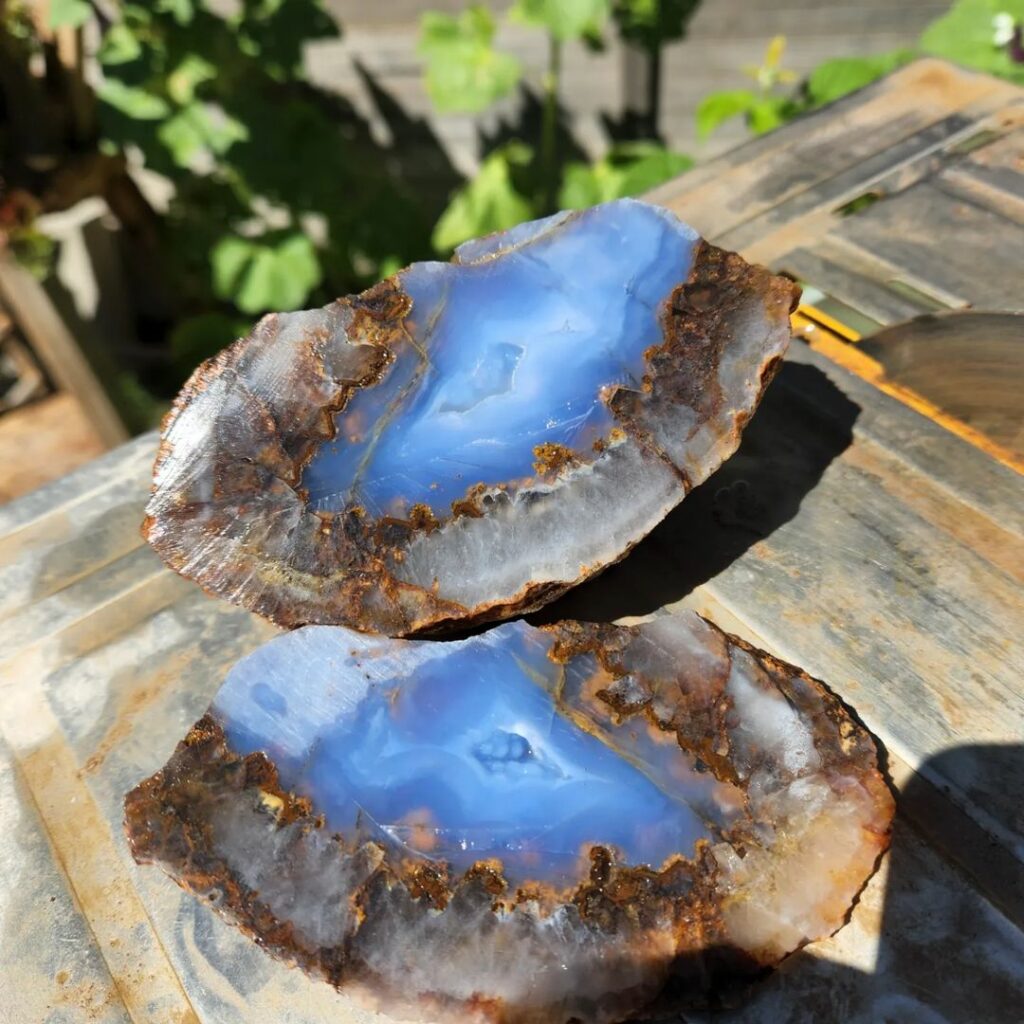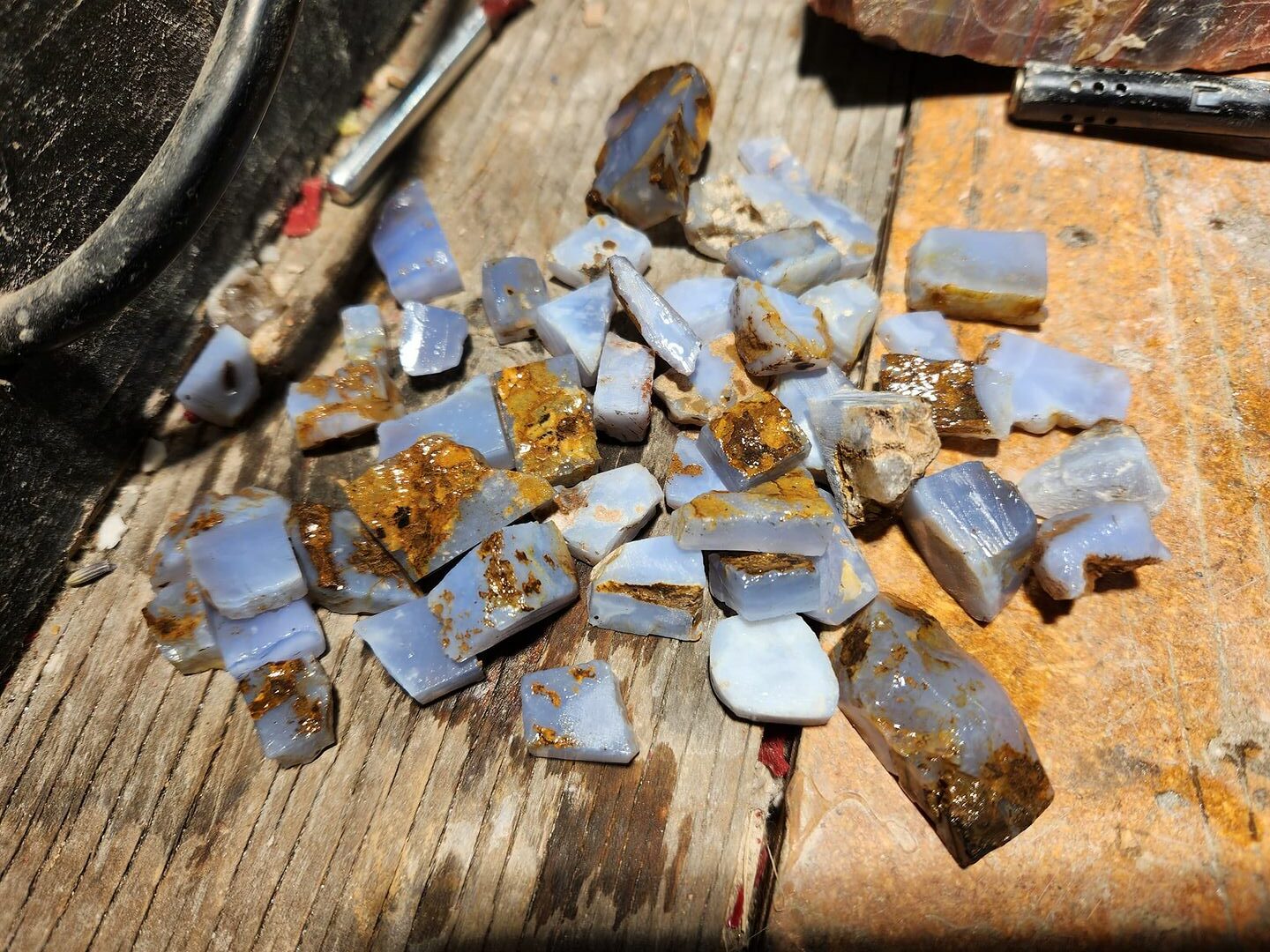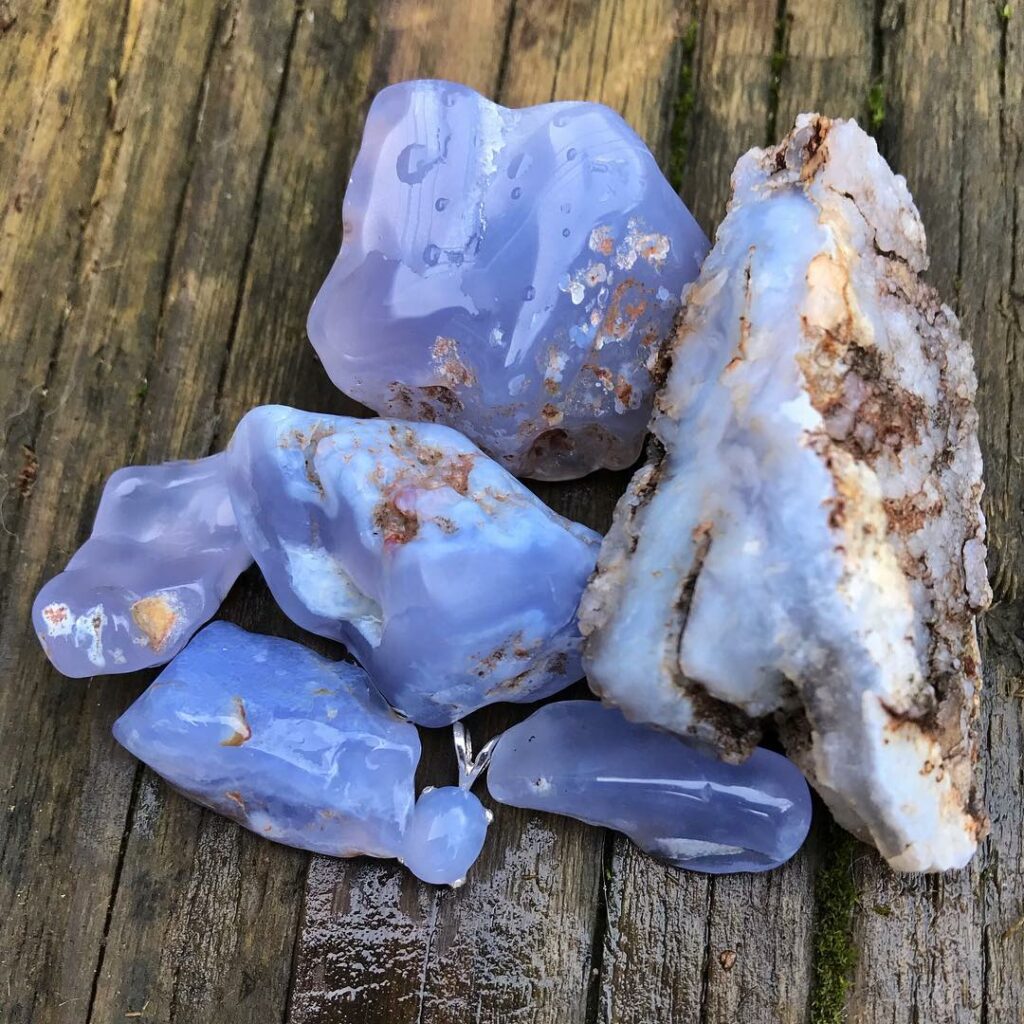Ellensburg Blue Agate, one of the rarest stones in the world, boasts a unique allure and exclusivity. Found solely in one specific location, this exceptional variety of agate has not only become a treasured find but also a sought-after gem in fine jewelry. Its rarity and value have sparked widespread interest since its discovery.
Are you curious about hunting for it or perhaps considering adding it to your collection? Join us as we explore the intriguing history and characteristics of Ellensburg Blue Agate, unraveling its mysteries and uncovering its appeal.
What is Ellensburg Blue Agate?

Ellensburg Blue Agate is a blue variety of chalcedony found in only one location in the world. It ranges from sky blue to a deeper royal blue, depending on the individual piece. It’s said that the gem-quality pieces have a purple or lavender sheen on the surface, and pieces are often cut without any banding being present at all.
Like all agates, Ellensburg Blue Agate is actually comprised of chalcedony. Chalcedony is a complex intermixture of quartz and its polymorph moganite, crystallized at a level so small that a thin section must be placed under a microscope to view the structure.

Ellensburg Blue has acquired quite a reputation, owing mainly to local jewelers who used the beautiful blues in their work. The stone was rare in the beginning but it has become vanishingly so lately, especially with most of the agate beds being held on private land.
What Makes Ellenburg Blue Agate So Special?

Blue agate is relatively common, especially on the more blue-gray end of the spectrum. For a long time, there’s been speculation about whether or not there even is anything that makes the Ellensburg Blue Agate different from those in other locations.
The answer is simple enough: there are two big differences in how the stone is formed compared to comparable blue chalcedony and agate varieties. It makes them different from even those found at the nearby Red Top Mountain.
The biggest tell is in the matrix of the stone, making it harder to tell when the stone is cut.
Agate is known for forming in basalt. Many of the best-known agates, such as the red-and-black Lake Superior variety, exclusively weather from this low-silica igneous stone. That’s not the case here.
Instead, Ellensburg Blue is formed in rhyolite. Rhyolite is a high-silica igneous stone. Unlike many of the host rocks we find, rhyolite is extremely fine-grained. It’s even used as a stone by itself. The famous Rainforest Jasper, for instance, isn’t a true jasper but is instead a rhyolite variety.
This means that a nodule of Ellensburg Blue should have a rhyolite matrix, generally brown or red in color. It’s very distinctive compared to the usual matrix found on agates. But that’s only in a rough form, what about gems that are already cut?
Well, it turns out there’s a measurable difference there as well. For whatever strange reason, Ellensburg Blue is high in the transition metal zirconium. This can be detected by gemologists with the right equipment.
Ellensburg Blue is also known to host goethite inclusions. A commonly included iron mineral, goethite generally occurs as black spots in chalcedony, and it’s considered a major factor in its identification.
Lastly, Ellensburg Blue only occurs with different shades of blue in the banding. While this can occur in some other places, these blues are generally interspersed with whites, reds, or other colors in addition to the blue banding.
Where is Ellensburg Blue Found?

Ellensburg Blue Agate is only found in Kittitas County in Washington. Most of the agate is also located on private land, which makes it a hard find for those rockhounds who do seek it out.
Since the material is very rare and very expensive, those few locations which aren’t on private land are jealously guarded by those who go hunting for them on a regular basis.
The best chance for an outsider is a paid dig. The Rock’N’Tomahawk Ranch offers paid digs outside of winter and may be the best chance for a rockhound to find some.
Otherwise, you’ll have to find land that is legal to collect on nearby and hope that you find some. These stones are already hard to find in locations where they are known, but there are plenty of other interesting minerals in the area, so you aren’t going to head home completely empty-handed if you don’t get lucky.
How to Clean Your Ellensburg Blue

Quite often, these stones will have some debris and staining when you pull them from the ground. Even the rough sold online is often orange stained.
Cleaning them is a simple process, thankfully, since the chalcedony is chemically resistant and very tough as a material.
- Dry brush the material with a nylon or brass brush to remove as much loose debris as possible.
- Clean the material in soapy water.
- Use a dental probe or toothpick to clean out any cracks and crevices that have collected dirt, sand, or other debris.
- Soak in an Iron Out solution for a few days to remove any iron staining. Iron stains appear as red or orange stains on the stone, but are separate from the matrix.
- The matrix can be removed with the gentle use of a diamond lapidary file, but be careful not to scratch the agate itself unless you plan to work it.
It’s the same procedure you’ll use for almost any agate.
Is There Fake Ellensburg Blue Agate Out There?
Yes, and it’s fairly common. The most common fake that shows up is people trying to pass other forms of blue chalcedony or agate off as Ellensburg Blue. Some of these stones are a bit of a rarity themselves, such as Blue Lace Agate.
Without some sort of spectroscopy test for zirconium, you won’t be able to be 100% sure unless you pulled the stone yourself. That said, the following traits should show up:
- Black spotting should appear, almost all Ellensburg Blue Agate shows up with internal spotting from goethite inclusions.
- Ellensburg Blue usually has a steel tone to the blue, adding a bit of grey. If it looks heavily saturated then you may not have the real deal.
- Any matrix remaining should be orange or brown rhyolite, not the grey basalt found with most agate varieties.
- All banding should be blue, other colors indicate the agate has a different origin.
Worse fakes are sometimes produced as well, these are generally simply dyed blue chalcedony.
The high value of the stone means there’s a serious market for counterfeiters, but there are plenty of examples of real material to be found for the persistent agate lover.

